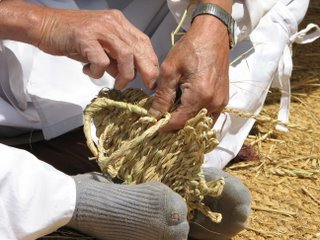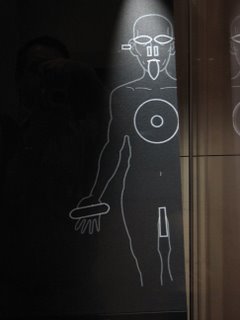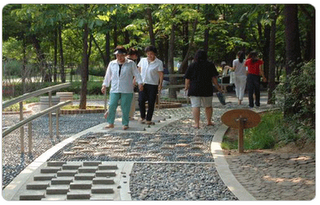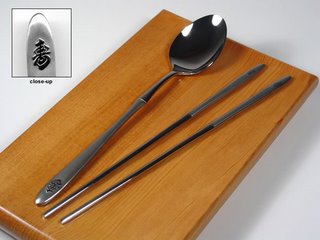Sometimes, when I have groups of students discussing controversial and important issues, I hear things that make me sad.
In this case, I’m just tired of people’s focus on money (getting and keeping money) at the expense of others.
On the one hand, whatever happens in Korea to Korea and Koreans is none of my business. This is a country run by a democratically elected government and whatever direction they choose to take is up to them. This is their country and the future should be theirs to decide. On the other hand, the actions they take here affect other people.
One group in my Advanced Speaking class recently did a presentation on the controversy over the planned move of the U.S. Yongsan base to Pyeongtaek. All but one of my 24 students said that the base should be constructed at Pyeongtaek without further ado. I hadn’t expected this. Their presentation was quite interesting for me, but the discussions that followed were even more interesting. Any time that the U.S. military is discussed, the reasons for their presence here come up. The students didn’t seem to think that there was a real danger of war, but they didn’t want the U.S. to pull out. Then the discussion moved to a final resolution and reunification, and only one student in the class thought that reunification would be a good idea. To be honest, I couldn’t believe it. They didn’t seem to want reunification.
In general, I try not to get involved in a lot of political discussion with my students. I don’t want to offend them with my skepticism. I also don’t really care that much about what politicians anywhere are saying and doing. However, I was disappointed in their attitude. This attitude wasn’t based on a changing political reality. They simple felt it would be too expensive to reunify. It makes me sad to think that Koreans, after years of hoping that they could reunify their country, have changed because it would be financially difficult to do so. The thought that divided families should to be reunited wasn’t even brought up.
To be fair, I don’t know if this is just a generational thing. Most of my discussions with have been with college-age people. It’s possible that older people still passionately want reunification, and that it is only the younger generation that doesn’t, but I don’t think so. After the Asian financial crisis, threats to peoples’ livelihoods here are taken very seriously and no one wants to jeopardize their chances.
Let me provide a little background that may explain my feelings of disappointment. It’s a little difficult for ex-pats who came to Korea in recent years to understand the difference in attitude. Twenty years ago (1983-86), EVERY Korean of any age whom I spoke with held a deep and passionate belief that North Korea and South Korea should be re-united. I don’t recall ANYONE ever suggesting anything different. Their fervent dream was for North and South Korea to be united – really quickly. Practically everyone could manage to produce a tear or two when talking about North Korea. It was, after all, only 30 years after major combat operations ceased. Many Koreans knew someone on the other side of the border or had family members who had a brother, sister, mother, father, grandfather, or grandmother who were there.
People here really believed that they were ONE people - Koreans. It was a very emotional time. The division of the peninsula was still like an open wound.
After the fall of the Berlin wall in 1989, Koreans were ecstatic. They thought, “Why not us next?” Then the next few years showed them how much it cost West Germany to try to assimilate the East Germans. Now, the first thing out of everyone’s mouth is, “Oh, it will cost too much.” And for those who do want reunification, it’s almost always followed by, “We’ll use their resources and they’ll provide us with a cheap pool of laborers.” Not exactly love for their brothers and sisters.
50 years after the fighting ended, many of the people for whom the war was a defining moment have passed away. The ties that bind young Koreans to uncles, aunts, grandfathers, or grandmothers in another country just don’t seem that strong.
As well, South Koreans' feelings about North Koreans have really changed. Many South Koreans have traveled to North Korea on tours. Many have seen North Korean athletes here. Some have worked at Kaesong. There are quite a few North Korean defectors living in Korea. Everyone has access to more news about North Korea. Now, I often hear South Koreans saying that they just can’t understand each other very easily because they speak a different language, or they can’t understand each other because their cultures are different. The Northerners who live in South Korea were once welcomed with open arms, given money, and used in propaganda campaigns against the North. Now, the Northerners are an embarrassment. The South wants them to be quiet so that North Korea isn’t offended. The Northerners are often seen as country bumpkins who are costing the taxpayers a lot of money to train and assimilate, and the Southerners are looking for excuses not to reunite.
I don’t think anyone has a right to tell Koreans what they should do. If they don’t want to reunify, that’s their choice. If they want to reunify under Northern rule or Southern rule, that’s their choice, too. If they can come up with a different idea, that’s their right, too. But, to abandon their northern brethren because the financial sacrifice would be too great is disappointing. To have to give up a trip to Europe in the summer, another house in the countryside, or even just a new feature-laden cell phone doesn’t seem like such a sacrifice if the result is helping family.
 At the Migrant Workers' Festival today, there was an area set up for traditional Korean handicrafts, and I was mesmerized by one old man who was making straw sandals. I have a fairly vivid imagination, and I always enjoy looking at the hands and faces of old people, especially country people, and trying to imagine the experiences they must have had - the houses they have built; the fields they have tilled; the lives they have touched.
At the Migrant Workers' Festival today, there was an area set up for traditional Korean handicrafts, and I was mesmerized by one old man who was making straw sandals. I have a fairly vivid imagination, and I always enjoy looking at the hands and faces of old people, especially country people, and trying to imagine the experiences they must have had - the houses they have built; the fields they have tilled; the lives they have touched.









































